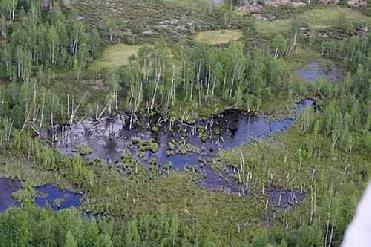
Scientists working in different fields are still trying to solve the mystery of the Tunguska explosion. RIA Novosti photo
MOSCOW (BNS): The explosion of a hydrogen-saturated part of a comet in Earth�s atmosphere caused the mysterious Tunguska blast in 1908 that crushed millions of trees in Siberia, a Russian scientist Eduard Drobyshevsky said on Monday.
Drobyshevsky, a doctor of physical and mathematical science and chief researcher at the Ioffe physics and technology institute of the Russian Academy of Science, said that his new theory of a comet exploding after grazing Earth�s atmosphere explained the mysterious Tunguska blast.
Russian news agency RIA Novosti quoted Drobyshevsky as saying that in 1908 an icy comet nucleus saturated with dissolved hydrogen and oxygen entered the Earth atmosphere tangentially. The body had a speed of about 20 km per second, its size was 200x500 meters, and it weighed 5-50 million tones, it said.
A blast equivalent to anything between 5 and 30 megatons of TNT occurred near the Podkamennaya Tunguska River in a remote region of Siberia on June 30, 1908. Until now the cause of the century old blast has not been determined, which crushed 80 million trees, destroying an area of around 2,150 sq km (830 sq miles).
RIA Novosti reports that it is believed that a huge meteorite hit the area, although scientific expeditions have failed to find an obvious crater. �If the presumed impact had occurred some 4 hours and 47 minutes later, the Earth�s rotation means it would have completely destroyed the then Russian imperial capital of St. Petersburg,� the agency reported.
The part of the nucleus, weighing about a million tonne, detonated at a great altitude, and the explosion caused the fallen trees and other phenomena associated with the incident. The main part of the nucleus went through the Earth atmosphere and out into space again, it adds.
 Previous Article
Previous Article












The Indian Air Force, in its flight trials evaluation report submitted before the Defence Ministry l..
view articleAn insight into the Medium Multi-Role Combat Aircraft competition...
view articleSky enthusiasts can now spot the International Space Station (ISS) commanded by Indian-American astr..
view article